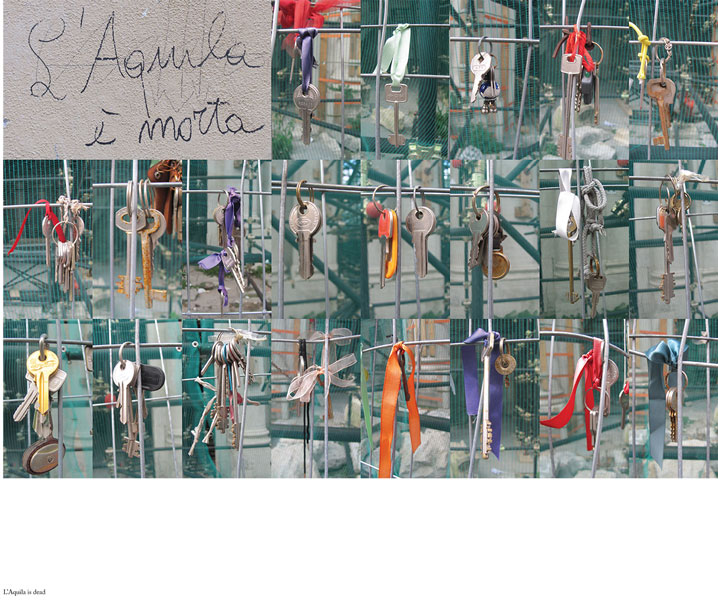
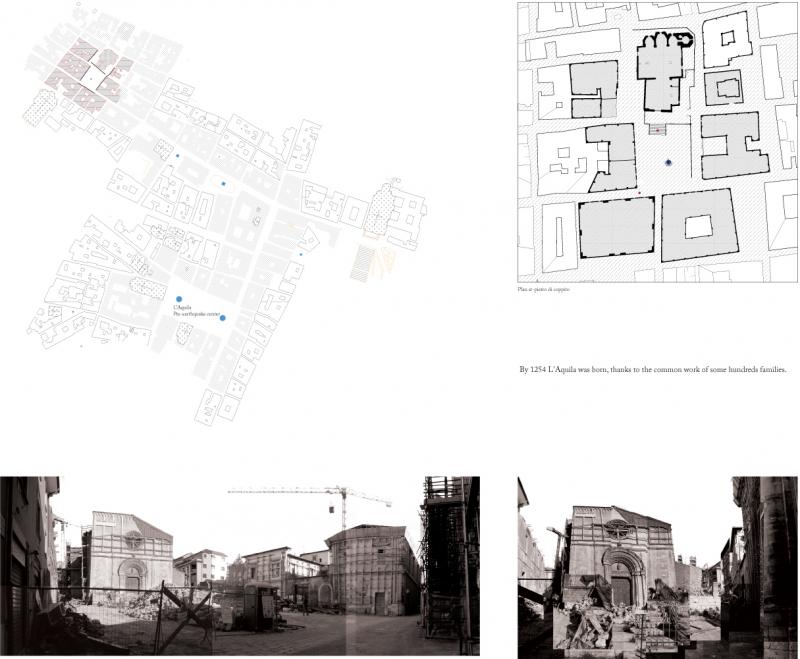
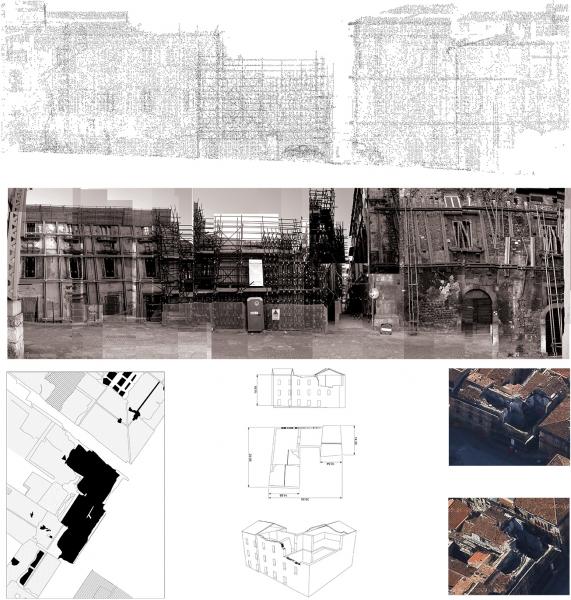
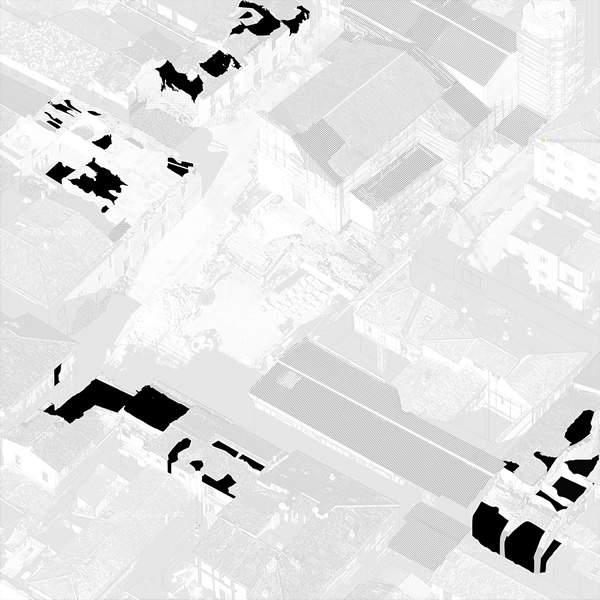
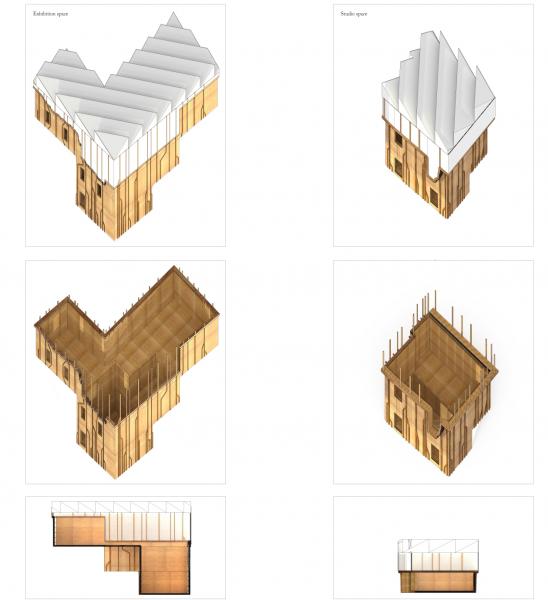
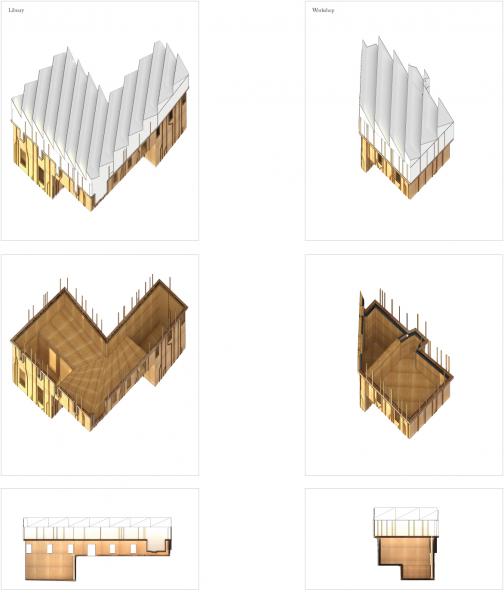
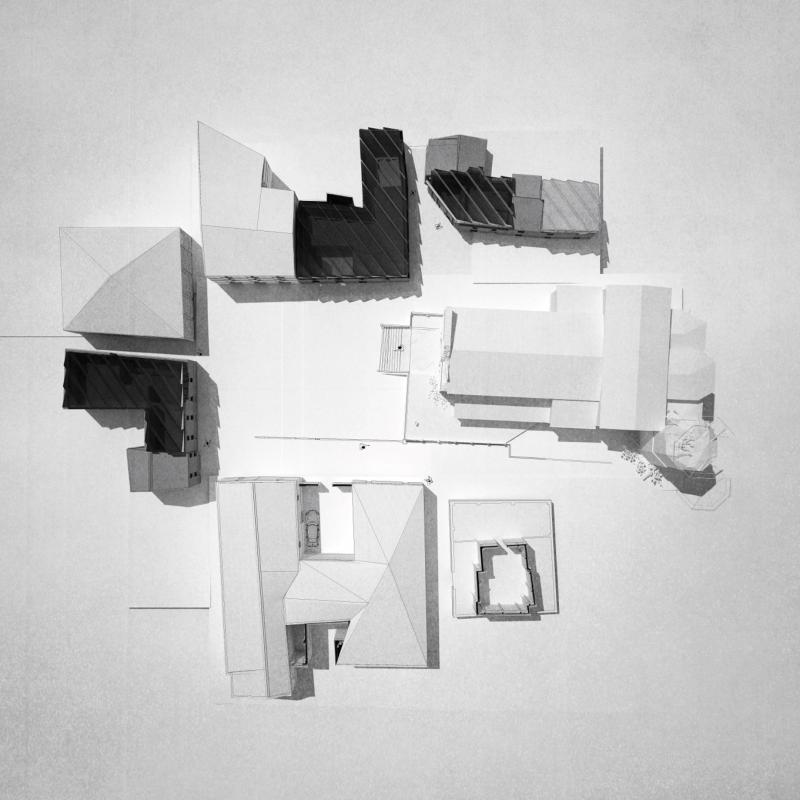
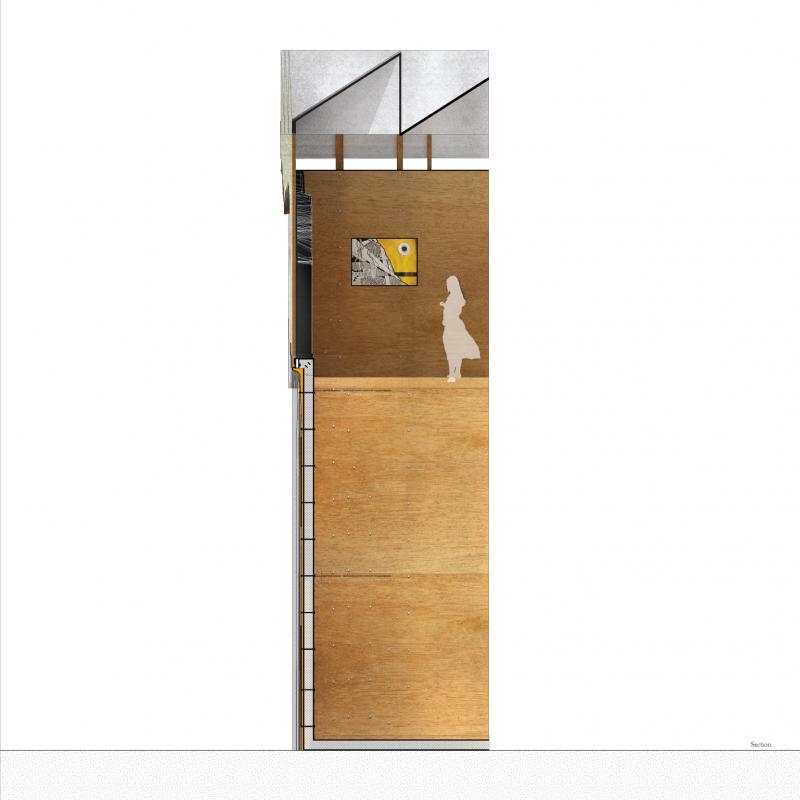
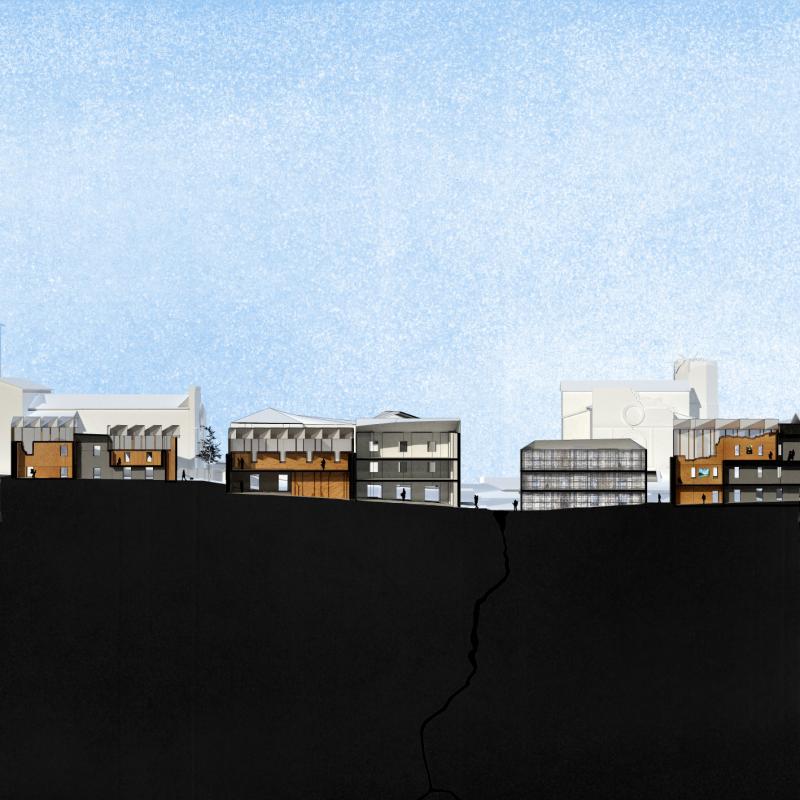

Guildhall, L'Aquila
When an earthquake strikes a city a multitude of structures fail.
Buildings collapse, the infrastructure is hit, people require access to water shelter and food.
To address these immediate survival needs, there is usually a very swift and effective response.
However the indeterminate timescale for long term reconstruction has a profoundly damaging effect
as social fabric and structures start fading and failing. In l’Aquila, following the 2009 earthquake, the
intervention of the government has exacerbated this social disintegration by excluding the citizens
from the city for an indeterminate period. Consequently people are pushed out of the city center
into the peripheries. The day to day interaction and exchanges which characterise space and urban
uses in the city are quickly lost.
The exclusion policy has resulted in an incomplete plan on how to address the issues of their city,
where to invest and how to take action.
This project posits a speculative system devised to react at quicker pace to long term reconstruction
by setting a system in which knowledge is passed on from professionals to inhabitant. A system
which requires the cooperation and collaboration of the local population.
A series of pavilions will be built inside the destroyed city; studios, workshops and galleries which
will be built and populated by the people of l’Aquila using the existing worker's guild organisations
as a committee to implement the strategy.
As they are completed, these pavilions will be lifted into the collapsed voids providing spaces in
which people can exchange, interact, debate, and be the source of a common memory that will
remain after the reconstruction process.
To achieve this, three dimensional scanning technology is ustilised to translate the destruction into
a digital template . This information permits a precise and diagnostic approach to securing and
refitting the buildings of l’Aquila. Digital imprints of the faults and damage, by borrowing techniques
from medicine and dentristry speculate on community building a precise fit between what is
existing and the inserted pavilions.